Barcelona’s academy, La Masia, is well-known to the footballing world. After all, it is the same academy that produced players like Lionel Messi, Xavi Hernández or Andres Iniesta, among many others who went on to become one of the best on the planet.
But despite that, their younger crop of players rarely get enough attention these days as the world has just slightly forgotten about them. Their second team, Barcelona B, currently compete in Segunda División B, the third rank in Spanish football, and are lead by García Pimienta.
This tactical analysis scout report will aim to give you the tactics and team analysis of Barcelona B and their most prominent characteristics in both attack and defence and will share what similarities the young Barcelona players have with that of the senior team.
Team overview
Generally speaking, Barcelona B are in many ways the reflection of what the senior team is, or at least, what the whole philosophy of the club should be. Pimienta very much bases his tactics on positional play and awareness, possession-based football and quick exchanges and passage of the ball.
His players are mostly all extremely mobile and versatile, often swapping places, moving around the pitches and not dwelling on the ball. Of course, individuals do sometimes get the spotlight with the likes of Riqui Puig, Abel Ruiz or Jandro Orellana, but the tiki-taka Barcelona way is very much present in the squad ever since Pimienta took over the team.
This tactical analysis scout report will now get into more analysis about some of Barcelona B’s most prominent tactics going forward as well as provide you with an analysis of their defensive style of play.
Tactical analysis: Attacking style of play
“Juego de posición”
When it comes to the attacking tactics and the attacking style of play, Barcelona B are a very technical team that tends to tear their opposition apart with excellent positional play. Of course, they love to be the team that’s attacking all the time and they love to have possession of the ball.
Their preferred formation is the 4-3-3, which they’ve used in 81% of the games in the last calendar year. In the 2019/20 season, however, it was only used once in three games as they have opted for a 4-1-4-1 the other two times.
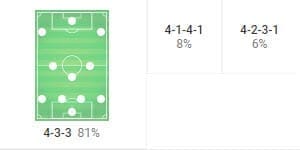
On average throughout the last calendar year and across all competitions, Barcelona B registered 62.16% possession, leaving their opponents with only 37.84%. Just like the senior team, the younger squad starts everything with the defence.
The full-backs have the licence to go higher up the pitch but they still often don’t go further than the halfway line until prompted to do so. The task of the centre-backs is to push up with the ball, conquer space and then combine with the midfield or the front line directly.
Notice in the image down below how that translates onto the pitch. The centre-backs have to be courageous and good enough on the ball to be able to execute their tactics perfectly. Once they push forward, often beating their markers or shrugging them off, the full-backs can bombard forward as well.
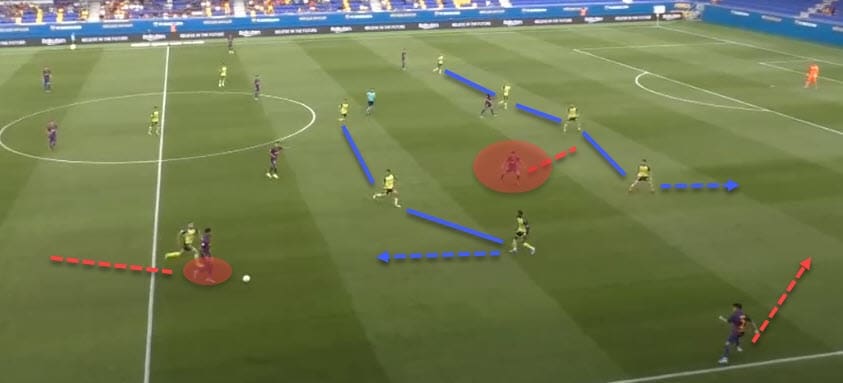
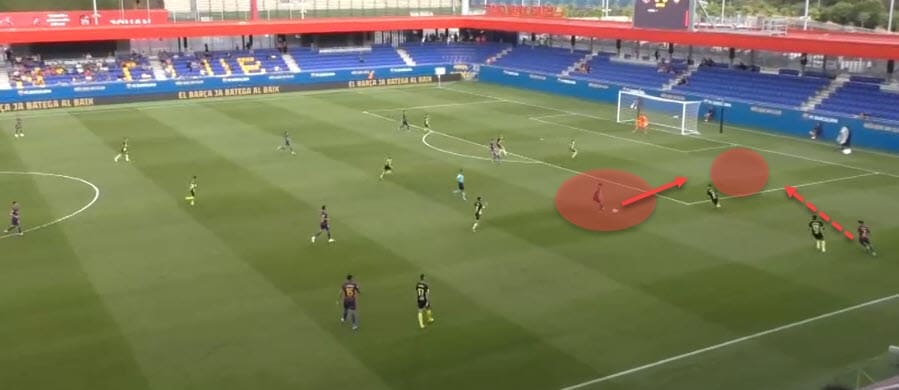
Notice how the pieces are moving across the board: the centre-back rushes forward, attracting multiple markers and making sure the winger can drop in-between the lines and the right-back can make a darting run behind the defence.
The free player who dropped between the lines then has enough time and space to lay the ball off into the box where the rushing full-back is still heading to.
Starting the attacks from the first line of defence is something of a trademark move for the young Catalans. In the next example, a similar thing happens. The centre-backs keep a high line, allowing the full-backs to push behind the defence, dragging markers with them and allowing the forwards to drop between the lines to receive the ball unmarked.
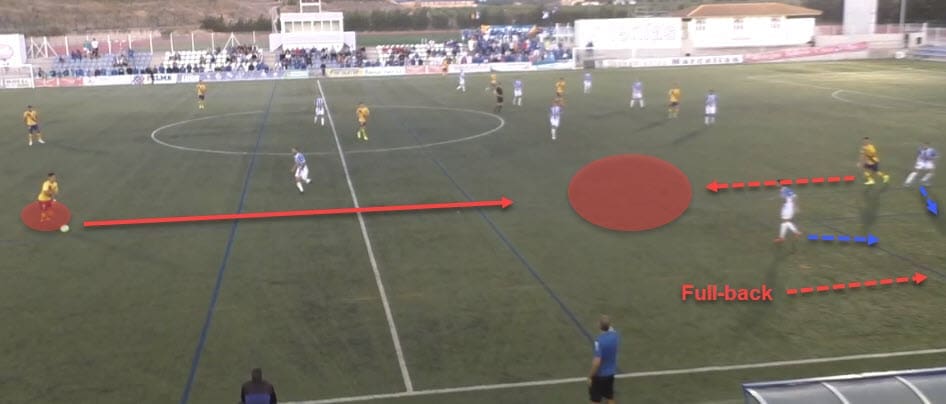
This is not always so easy, however. When they are pressed and not allowed as much space to vertically attack their opposition in a direct manner, they tend to create overloads in order to bypass the opposition entirely.
The next image will show that more clearly. As they are collapsed upon in the wider areas, the young Blaugrana players drop multiple players to combat the press more easily. With four players caging the opposition in a game of “rondo” on the flanks, they can manoeuvre their way out of a sticky situation.
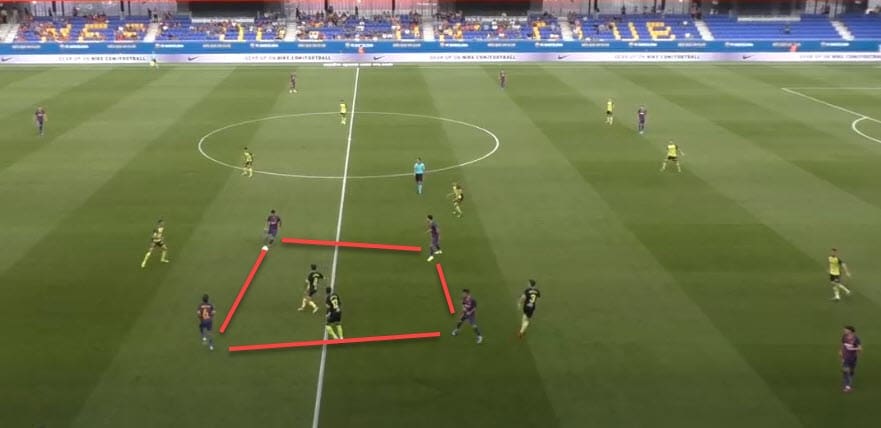
While the opposition is busy chasing the ball, they invite them where they want them to be while simultaneously creating space for the players in other areas. Once it is safe to get the ball forward, the free man is found with a seemingly easy pass.
From there, the play is focused solely on one side as all of the forwards burst towards a single area, dragging the remaining markers with them and freeing the opposite side. In that moment, Barcelona B swap the flanks with an accurate long ball and play the opposition like a fiddle with a standard positional play.
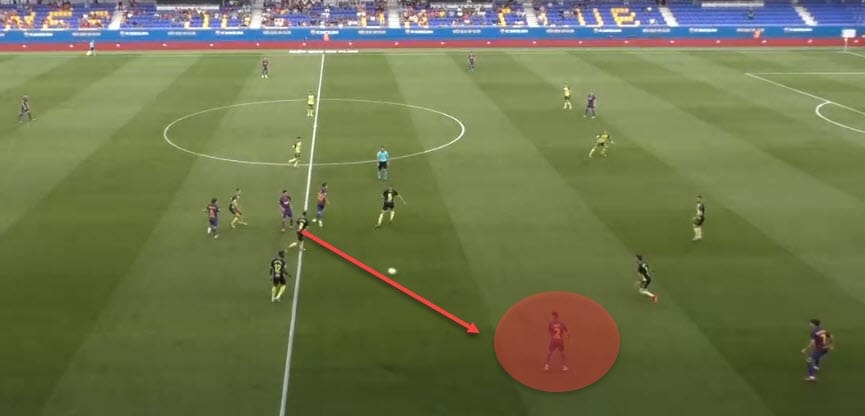
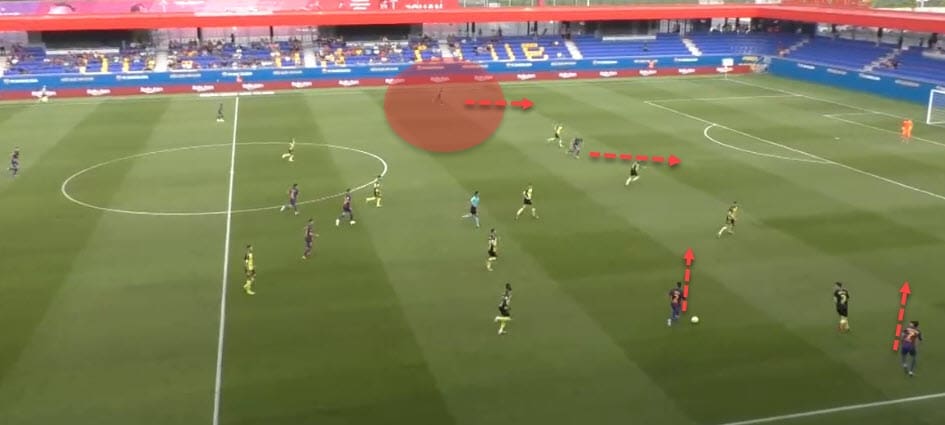
We’ve already mentioned that a big part of their tactics lies in possession of the ball. But having a lot of the ball also means that they are the ones who usually attack more than their opposition and in turn, it also means that often they face sturdy and compact defences.
In general, they like when their opponents are courageous and challenge them for the ball because that leaves them with more options to outplay them. But how do they cope with low-blocks and compact defences?
This is indeed something the seniors often struggle with and it’s pretty similar with Barcelona B. But generally speaking, they tackle it in a rather similar manner: via movement and fast ball circulation.
In the next example, Barcelona B are facing a turtled up defence who are sitting in their box and there are seemingly no clear openings. But notice how the pieces start moving and the ball swiftly swaps sides, creating space behind the backs of the opposition until someone can slot in and exploit it.
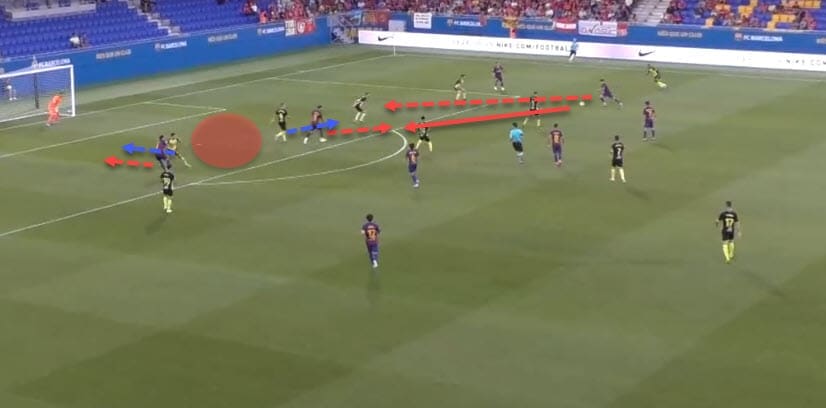
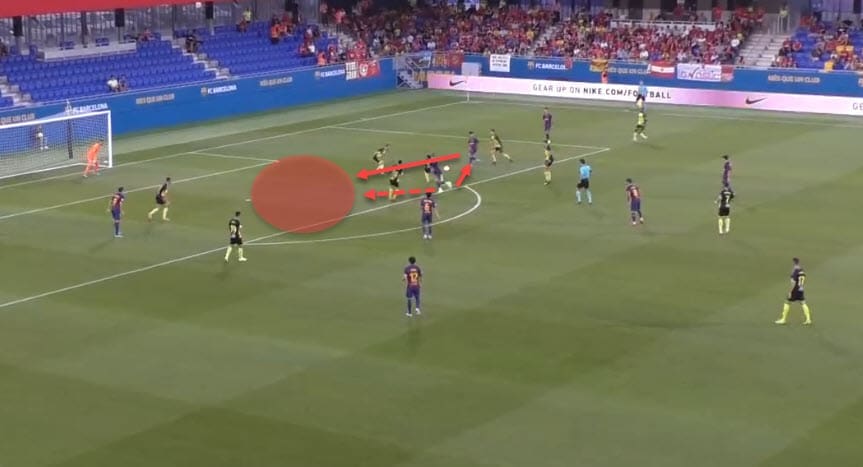
Notice above how the forwards move to create space in the backline. One goes one way while the other drags his marker the other way. Once the space is created, a swift turn and a quick one-two suddenly leave Barcelona B in a 1v1 situation and a brilliant goal is scored.
In the last calendar year and across all competitions, Barcelona B averaged 4.93 passes per possession and also tallied 15.99 passes per minute on average. This indicates that they can circulate the ball quite quickly and they do it accurately too.
As a team, they averaged 86.5% passing accuracy and have sent 61.41 balls into the final third and 81.08 progressive passes with 74% and 76.4% accuracy respectively.
This, without a doubt, is the basis of Pimienta’s attacking tactics but this tactical analysis scout report will now shift towards the defensive spectre of Barcelona B’s game.
Tactical analysis: Defensive style of play
A calculated approach
Pep Guardiola’s and the senior team’s famous five-second rule doesn’t entirely apply to Barcelona B’s defensive tactics but it’s still a part of their success. At the same time, the high-press is not always deployed but Pimienta still likes it.
Generally, the young Blaugrana squad will press their opposition but will do it rather systematically and with great coordination. They seem to have their own pressing triggers which prompt certain players to step up and contest the ball in specific situations.
This will become clearer with the next examples. The first one depicts a situation in which the opposition is trying to recycle possession in the first third of their pitch. Once the first centre-back receives the ball, the first Barcelona B forward goes to contest it while the rest move. Once the ball is carried over to the second centre-back, the second Blaugrana player steps up while the rest of the squad shifts accordingly.
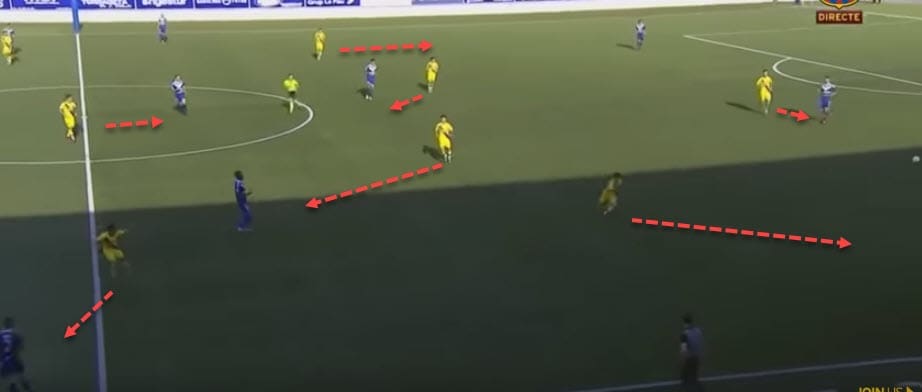
We can notice that the press is not manic with extremely high intensity, but rather systematic and trigger-oriented, slowly forcing the opposition into a tricky situation and reducing their area of operation with every pass.
At times, however, this can turn into a high-press that aims to force the opposition into mistakes and/or blind clearances, like in the example below when the last line of defence is forced to go for a long ball due to Barcelona B being in their faces.
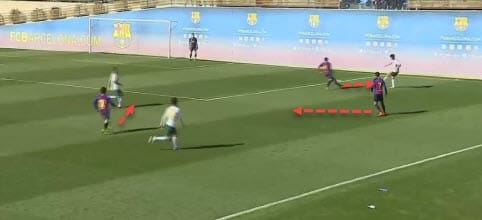
Finally, the collapsing technique is also often used to get the ball in the danger areas and upon losing the ball. Below, we can see a situation in which the opposition is trying to advance through the middle of the pitch but a fast collapse means that Barcelona B can get the ball quickly and turn defence into attack in an instant.
Four players collapse on a single target, which increases the chances of getting the ball and once that is accomplished, there are immediately options for a swift transition.
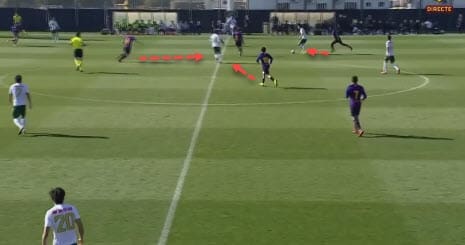
In the last calendar year and across all competitions, they averaged 77 recoveries, which is a big part of their defensive tactics and overall arsenal at their disposal. But this is not, however, the exclusive way they choose to defend.
Against bigger teams and stronger opposition, they are no strangers to pulling back and trying to defend as a compact unit rather than rushing the ball all the time. It all depends on the situation and the state of the game.
Final remarks
In many ways, Barcelona B are truly faithful to the type of football the world always associates with the Catalan giant. They are quick, technical, smart and like to systematically dismantle their opposition.
The large portion of their tactics is based upon the positional play and movement while in defence- they like to get the ball back as soon as possible. They have been, however, guilty of not being able to hold onto leads, which might be down to a mentality problem.
Generally speaking, they are an extremely young team full of potential and with a great coach on the sidelines, which this tactical analysis scout report has hopefully highlighted. La Masia may not be as attractive to the world as it used to be, but it’s very much still alive and kicking.
Maybe even more so than it used to be.

If you love tactical analysis, then you’ll love the digital magazines from totalfootballanalysis.com – a guaranteed 100+ pages of pure tactical analysis covering topics from the Premier League, Serie A, La Liga, Bundesliga and many, many more. Buy your copy of the August issue for just ₤4.99 here.

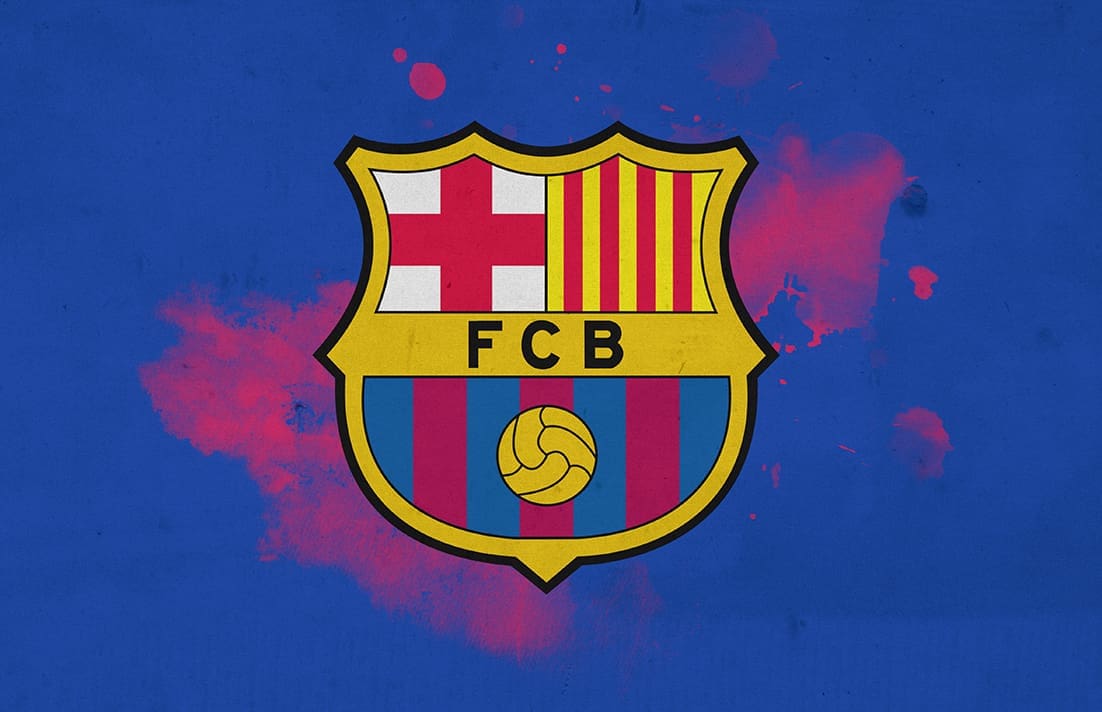




Comments